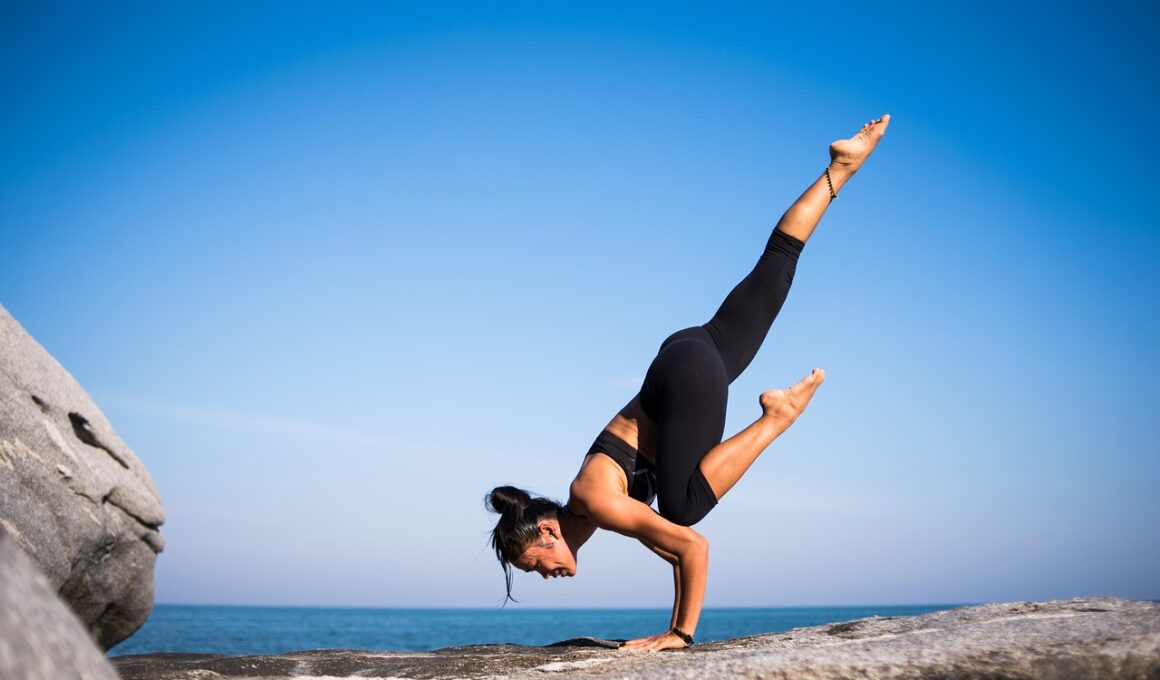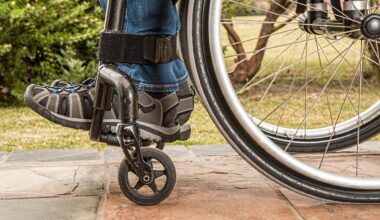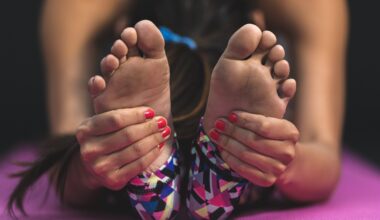Week 45 Boot Camp Flexibility and Mobility Routine
In this week’s Boot Camp-inspired flexibility and mobility routine, participants will find a vibrant blend of dynamic stretches and movements designed to enhance their overall performance. Flexibility is crucial in any workout plan, as it improves range of motion in joints, reduces the risk of injury, and facilitates better posture. To ensure a robust approach, begin with a warm-up that includes at least five minutes of light cardio such as jogging or jumping jacks. Following this, deeper stretches focusing on major muscle groups are key. Examples of effective dynamic stretches include arm circles, leg swings, and torso twists. Incorporating these movements helps muscles transition smoothly into their workouts. Additionally, using tools like foam rollers can significantly relieve tension and improve blood flow. In tandem with stretches, mindful breathing techniques can significantly enrich the experience. Participants should practice controlled inhalations and exhalations during each stretch, maximizing oxygen flow. Before concluding the routine, set aside time for static stretches which aid in recovery and flexibility maintenance. Always listen to your body to ensure you’re engaging effectively without causing strain.
This flexibility and mobility routine focuses on enhancing strength and balance through targeted exercises. Start with a series of side lunges, which effectively engage the lower body while improving lateral movement. For better balance, consider integrating yoga poses such as the Warrior III, which challenges stability while promoting core strength. Adding resistance bands can amplify effectiveness; these provide varying levels of tension during exercises. Next, incorporate front and back leg swings to warm up the hip flexors and hamstrings, making sure to maintain proper posture throughout. This will help ensure that the primary muscles, including the glutes and quads, are fully engaged. Always keep your movements controlled to prevent injury. After your initial phase, consider transitioning into more foundational workouts like planks, which engage multiple muscle groups and improve overall stability. Duration of planks should gradually increase for better endurance. Conclude with a cooldown that combines floor stretches focused on the hamstrings, quadriceps, and lower back. This will aid in recovery, ensuring that muscles maintain their flexibility allowing participants to execute future workouts with greater ease.
Implementing Effective Drills
To implement effective drills that contribute to increased flexibility and mobility, consider incorporating mobility drills between your strength sets. Things like deep squats can help improve flexibility in the hips and knees. It’s helpful to establish a rhythm in your workout to ensure minimal downtime. Work for about 30-60 seconds on each mobility drill before returning to your strength sets. Bear crawls are also beneficial as they engage multiple muscles and promote coordination. Remember to focus on your form to gain the maximum benefit. Include both static and dynamic stretches throughout your session to keep muscles engaged. Don’t hesitate to take breaks; hydration and proper nutrition are key to sustaining your energy levels. It can be useful to follow a structured plan that outlines specific flexibility goals for each week. This gives participants clear milestones to reach and motivates continuously. Consider checking progress through photos or journals. Moreover, ending sessions with meditation or mindfulness techniques can enhance recovery by focusing on breathing and relaxation. These tactics together will contribute to overall agility and strength in future workouts.
Maintaining flexibility and mobility is key to a comprehensive workout plan, particularly for those engaged in intense Boot Camp routines. Turn your attention towards daily habits that support your efforts outside of the gym. Simple activities like walking or cycling can significantly impact overall flexibility maintenance. Implementing core strength exercises is essential as well; this strengthens stabilizing muscles making it easier to achieve a full range of motion. Consider adding swimming sessions into your weekly schedule since this low-impact activity is fantastic for promoting movement through water resistance. Furthermore, the consistent practice complementing your routine will translate to greater improvements in flexibility and mobility over time. Frequent sessions will also help reduce soreness post-workout, thereby enhancing recovery times. The integration of variety in your workout will keep the routine interesting while also challenging your body in different ways. It’s crucial to remember that your body needs time to adapt, so be patient with your progress. Proper rest days contribute immensely to allowing your body to recuperate. Finally, seeking guidance from professional trainers can help cultivate nuanced techniques that enhance overall effectiveness in mobility training.
Safety Precautions
Safety precautions are immensely important when navigating any workout routine. Individuals should always heed their body’s signals, particularly concerning flexibility and mobility training — if you feel pain, it’s essential to stop. Toward that aim, warming up before stretching helps prepare muscles for activity, minimizing injury risk. Avoid pushing stretches too far, as overstretching can be detrimental. Instead, focus on gradual improvements over time which helps your body adjust safely. It’s crucial to employ proper techniques for all stretches; incorrect movements can lead to muscle strains or joint discomfort. Particularly for beginners, seeking the advice of experienced trainers or attending guided classes can provide invaluable tips tailored to proper techniques. Regularly check your equipment and spaces to ensure they are safe and conducive to movement without obstructions. Listening to expert advice on adjusting exercises accordingly based on individual fitness levels can also improve safety and effectiveness. Additionally, maintaining hydration during exercise is essential; adequate fluid intake cannot be overstated in its role in ensuring optimal muscle performance. By prioritizing safety, participants are more likely to enjoy their training and reap lasting benefits.
A comprehensive understanding of anatomy can further enhance your flexibility and mobility training. Familiarizing yourself with muscle groups aids in performing exercises correctly. Engaging in online courses or workshops focusing on body mechanics can illuminate how different stretches benefit specific muscle groups. Understanding the importance of the hips, shoulders, and spine can help optimize workout effectiveness. Stretching these areas can help alleviate tension, leading to greater freedom in movement. Furthermore, consistency is vital; participating regularly in flexibility sessions enriches muscle elasticity. Document progress through photos or written logs to hold yourself accountable and celebrate achievements. Taking small steps can lead to significant changes over time. To deepen your understanding, consider reading books or articles by fitness professionals specializing in flexibility training. Learning various stretching techniques and their benefits is crucial; dynamic, static, and PNF stretching each have their respective roles. Incorporating resources from reliable sources increases credibility and knowledge in your training arsenal. Developing personalized flexibility goals can keep you motivated; working towards these milestones will make a difference. Above all, learning and practicing efficiently allows you to enhance your workouts effectively.
The Mind-Body Connection
Finally, understanding the mind-body connection can significantly enhance flexibility and mobility outcomes. Engaging with mindfulness practices during your workouts encourages a deeper awareness of movement and muscle engagement. Practices like yoga and Tai Chi emphasizes careful movements, requiring focus and concentration. This focus leads to increased awareness and can improve your connection to your body. Concentrating on breathing patterns fosters relaxation during stretches, thereby increasing effectiveness. Furthermore, visualizing successful completion of exercises can pave the way to achieving your flexibility goals. Mentally setting intentions prior to workouts ensures focus and motivation throughout the session. Consider using affirmations to boost confidence levels while completing each exercise. Integrating music into your workouts can also contribute positively to the experience by uplifting moods. End any session with a brief reflection on your progress, as evaluating your performance will help to reinforce positive results. Engaging the mind alongside the body creates a well-rounded approach to flexibility and mobility. Building on this connection will encourage participants to nurture both physical and mental wellness even beyond their workout routines.
This week’s Boot Camp flexibility and mobility routine is critical for optimized performance. Regular practice contributes lasting benefits to overall fitness and health.





